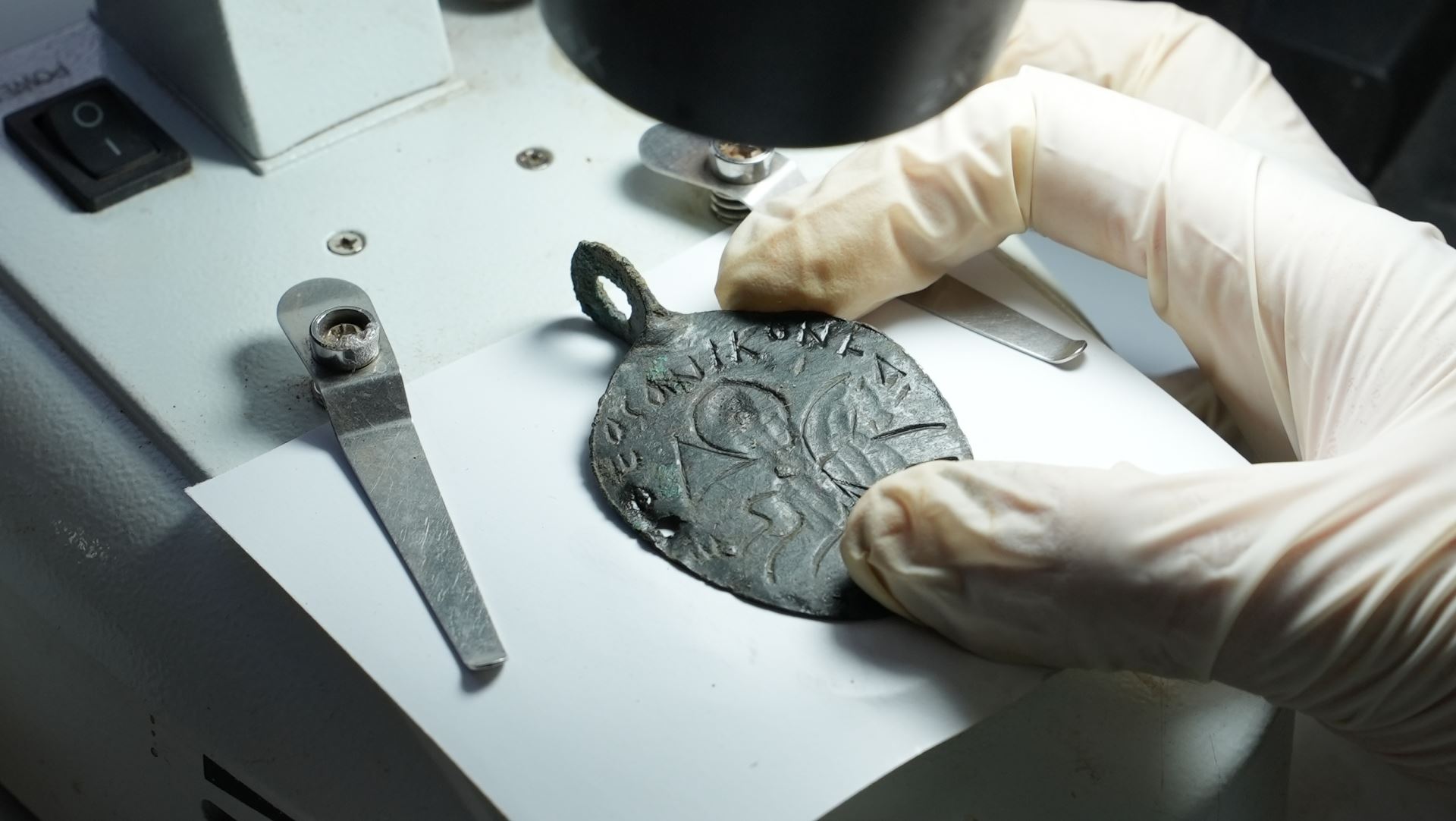
Archaeologists working in Hadrianopolis, an ancient city in northern Turkey, have uncovered a rare amulet dating to the 5th-century C.E., a period when the settlement was part of the Byzantine empire.
On one side, the amulet depicts Solomon, the 10th-century B.C.E. Israelite king and prophet, thrusting a spear into the devil accompanied by the words “our Lord defeated evil.” On the other, the amulet bears the names of four angels: Gabriel, Michael, Israfil (Raphael in the Christian tradition), and Azrael, the angel of death.
Though Solomon is a figure whose wisdom and strength is revered across Jewish, Christian, and Islamic teachings, Ersin Çelikbaş, the archaeologist at Karabük University who is overseeing the excavation, is confident the pendant is a Christian artifact.
One side of the amulet shows Solomon spearing the devil. Photo: Karabük University.
“It is a symbol of religion and power,” Çelikbaş said in a statement. “The depiction of Solomon on this pendant surprised us and revealed the importance of the artifact for Anatolian archaeology.”
Located near the Black Sea, the Romans turned the settlement into a city and named it Hadrianopolis after Hadrian, the second century emperor. It became an important military outpost and in previous excavations archaeologists uncovered evidence that cavalry was stationed in the city. This has led Çelikbaş to suggest that the amulet may have belonged to a cavalry soldier.
“Solomon is also known as the commander of the armies,” Çelikbaş said. “We understand that he was also thought of as a protective figure for the cavalrymen of the Roman and Byzantine periods in Hadrianopolis.”
While it is the first amulet of its kind found in Turkey, a similar one has been unearthed in Jerusalem, which furthers the sense that Hadrianopolis was an important religious center in ancient times.
After emperor Constantine divided the Roman Empire in 330 C.E. Hadrianopolis became a part of the Byzantine empire ruled from Constantinople. With the support of Turkey’s Ministry of Culture and Tourism, the ancient city has been the focus of concerted excavations over the past two decades. To date, more than a dozen major buildings have been excavated including churches, bathhouses, a theatre, and defensive structures. The ornate mosaics found on church floors have received particular attention.